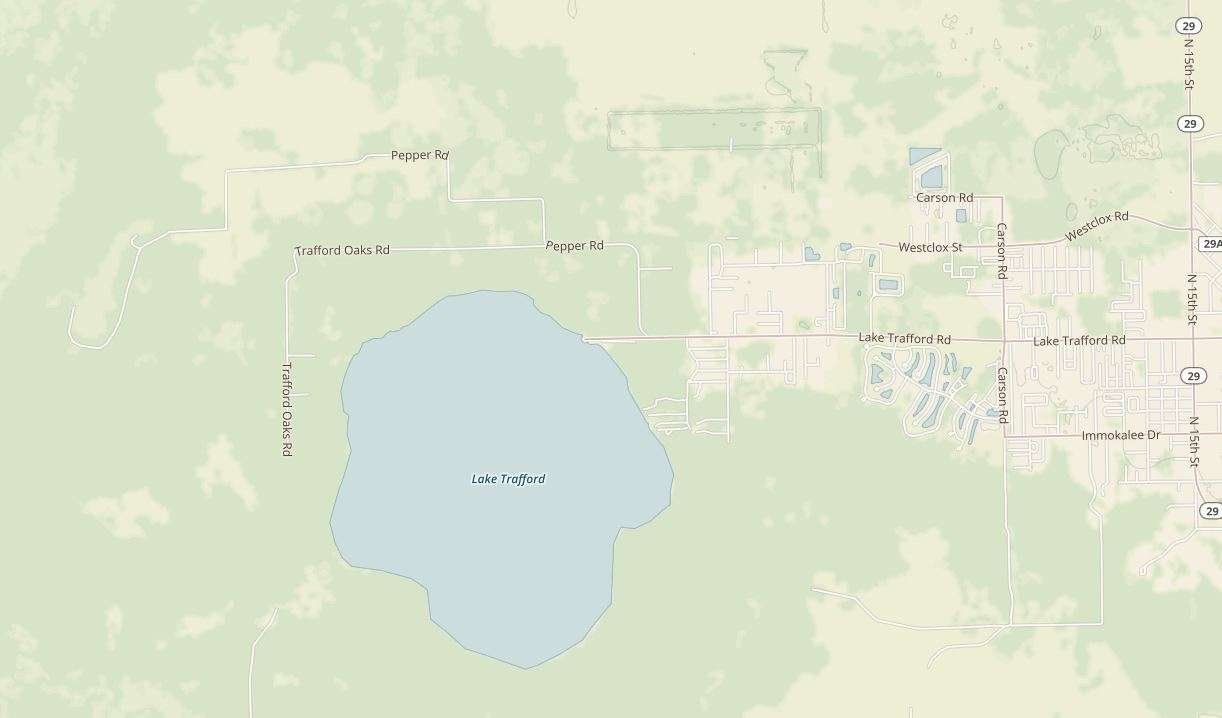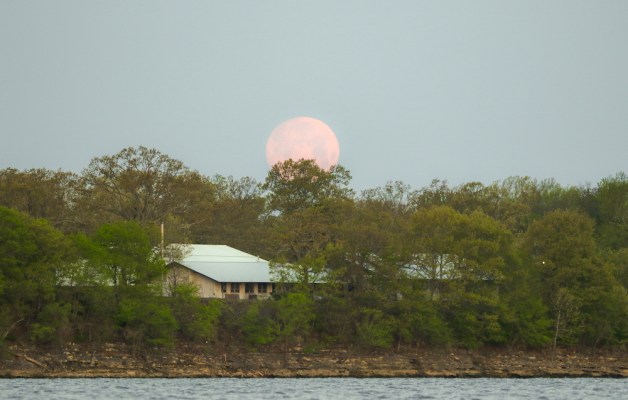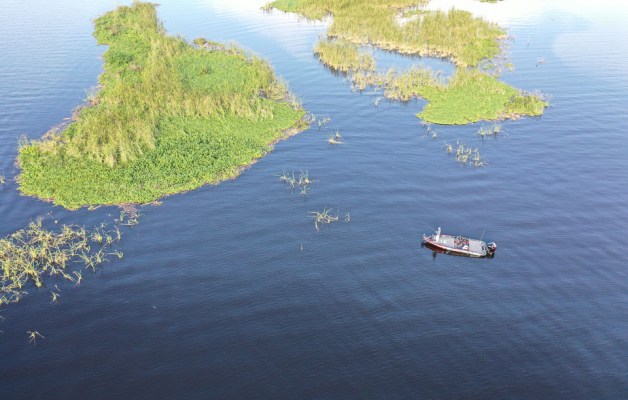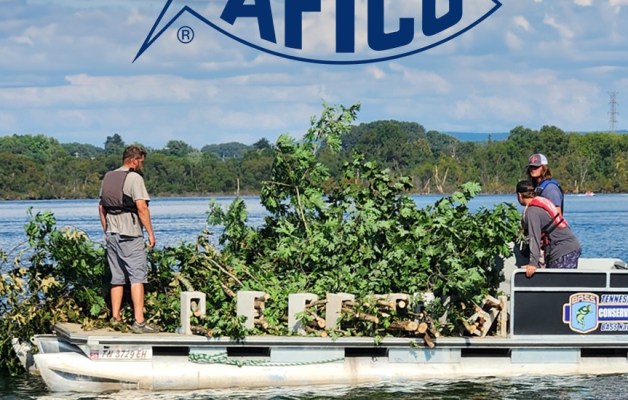
By Amber Nabors
Lake Trafford in Collier County recently received national recognition for its resurging bass fishery, made possible by ongoing restoration projects. Highlighted in the July/August issue of Bassmaster Magazine, 1,500-acre Lake Trafford has overcome a history ridden with devastating fish kills and unhealthy habitat to boast quality populations of black crappie (speckled perch) and largemouth bass — all thanks to a partnership between the determined citizens of Collier County, the South Florida Water Management District – Big Cypress Basin and the Florida Fish and Wildlife Conservation Commission (FWC).
“Lake Trafford is an important resource for boating, fishing and wildlife viewing,” said Barron Moody, regional administrator for the FWC’s Division of Freshwater Fisheries Management. “One of the FWC’s primary goals in the restoration of Lake Trafford was to create healthy habitat for Florida’s fish and wildlife resources, which in turn has generated more recreational opportunities for anglers and outdoor enthusiasts.”
Historically, Lake Trafford suffered from excessive algal blooms and frequent fish kills. These detrimental algal blooms were fueled by a thick layer of muck created from a buildup of detritus, or dead plant material, at the bottom of the lake. The SFWMD and the FWC provided $15 million to dredge millions of yards of muck from the lake, which allowed beneficial plants to expand, improving habitat for fish and wildlife.
Following dredging, the FWC stocked the lake with more than 500,000 largemouth bass fingerlings produced at the Florida Bass Conservation Center at the Richloam Hatchery, and planted approximately 75,000 bulrush plants to provide healthy habitat for the fingerlings. Future plans for supporting the long-term health of Lake Trafford include reestablishing native submerged aquatic vegetation, controlling nutrient runoff, managing the growth of exotic vegetation and monitoring the continued recovery of the lake’s fish and wildlife populations.
Bassmaster Magazine is published by the Bass Anglers Sportsman Society, the nation’s largest bass fishing organization, and annually lists its top “100 Best Bass Lakes” in the United States. Bassmaster staff review data provided by fish and wildlife agencies, results from bass tournaments, opinions from professional anglers and other data to determine their ranking.
Florida had the second most lakes on the“100 Best Bass Lakes” list with Lake Okeechobee, Lake Tohopekaliga, Rodman Reservoir, St. Johns River, Lake Istokpoga, Lake Rousseau and north Florida’s Lake Seminole. For the second year, Bassmaster staff also used the FWC’s TrophyCatch database for their evaluation. TrophyCatch is a partnership between biologists, anglers and fishing industry giants such as Bass Pro Shops used to document the catch-and-release of bass weighing 8 pounds or more in Florida. In order to be eligible for prizes, anglers are required to submit photos of their catch, showing its weight on a scale, before releasing the fish back into the water. The FWC’s biologists use TrophyCatch data for bass research, better management of Florida bass fisheries and to promote the catch-and-release of trophy bass.
During the Bassmaster’s top “100 Best Bass Lakes” selection process, Lake Trafford received significant consideration and Bassmaster staff were impressed when they learned the story of the lake’s rebirth and how it gained its reputation as an excellent bass fishery. While not included in the top 100 list, Bassmaster published an editorial that praised citizen-driven restoration efforts and crowned Trafford as the “101st best bass lake.” (See the column below.)
“I am so very proud that Bassmaster highlighted the dedicated efforts of our local citizens to raise support for Lake Trafford,” said Liesa Priddy, Collier County resident and FWC Commissioner. “The grassroots effort made by Collier County community members is what brought us to this pivotal moment for the health of Lake Trafford and the creation of this vibrant fishery.”
Priddy credits concerned and motivated citizens like Ski Olesky, owner of Lake Trafford Marina. “The movement to build support for Trafford restoration would not have happened if not for Ski and his late wife Annie,” said Priddy.
Today, Olesky runs airboat tours on the lake, educating visitors about the lake’s abundant fish and wildlife species with a powerful message that conservation is everyone’s responsibility and that ordinary citizens can make a huge impact.
“Fishing at Lake Trafford is great — and improving every year,” said Olesky. “I’m looking forward to the lake being back to one of the very best bass fishing spots in the state, thanks to the good work done by the FWC, SFWMD and Collier County residents. This lake’s success has truly been a partnership effort.”
From dead to 101
By James Hall
Twenty years ago, Lake Trafford was little more than a glorified mudhole. In an attempt to clear the south Florida lake of hydrilla in the early 1990s, officials sprayed the vegetation, which then sank to the bottom and created a layer of muck so thick (6 feet in some areas) that native plants died from a lack of sun penetration and oxygen in the water. A massive fish kill in 1996 put an exclamation point on the headstone of this fishery.
Fast-forward to now.
Lake Trafford narrowly missed inclusion in the 2016 rankings of our nation’s 100 Best Bass Lakes. Actually, it was the last fishery eliminated. Call it Lake 101.
The remarkable reclamation project didn’t start until November 2005. A $21 million dredging campaign — funded by Friends of Lake Trafford, the Florida Fish and Wildlife Conservation Commission (FWC), the South Florida Water Management District and the Collier County Tourist Development Council — began. The project was not completed until 2010. So, just five years ago, the FWC started restocking the lake with forage fish, native plants and 500,000 largemouth fingerlings. I was invited this past May to see firsthand the fruits of the Lake Trafford labor.
In a nutshell, the fishery is gorgeous. Bulrush, pondweed, tape grass and American lotus line the banks of the lake. Islands of grass are separated from the lake’s edge by ribbons of clear water. Some of this native vegetation was planted by the FWC with help from Florida Gulf Coast University students and staff members. Some of these plants came back strong naturally once the muck was removed.
Alligators are everywhere. There was not a moment during my four-hour trip when at least five of these critters were not in sight. I counted 23 at one point. Most importantly, the bass fishing was outstanding. I landed 12 largemouth up to 3 pounds and my guide was disappointed that we didn’t catch one in the 6-pound range because “there are a ton of bass in that size range here,” he said. Two small derbies had been held there this year and both took over 20 pounds to win. A double-digit bass has not fallen victim to an angler’s efforts, but a 9-12 has.
To me, Lake Trafford is the perfect example of why Bassmaster’s 100 Best Bass Lakes annual rankings are produced. Not only do we identify fisheries that will allow anglers to be successful during the limited number of days they get to spend on the water, but we take a moment to celebrate the efforts of states and communities that place a great deal of value on the visitation of bass anglers and the propagation of our sport.
Since our first attempt to rank fisheries in 2012, we have taken extra steps each year to increase the amount of data collected to create accurate rankings. This year, that extra step was to add two writers to the feature. Brian Sak, who calls California home, took on our Western Division. Mark Hicks, an Ohioan, spearheaded the research and writing for the Northeastern Division. Since bass anglers can be a secretive group, having an imbedded writer in regions far away from Bassmaster’s Alabama headquarters was imperative. The insights gained from these two guys on opposite ends of our country improved the stratification and dissection of the catch data we dug up.
Plus, adding Sak and Hicks allowed me to aggressively attack the Central and Southeastern Divisions. And Lake Trafford was just one result of the extra digging in the Southeast. There is no doubt that this fishery will continue to improve and will once again be in contention for cracking the 100 Best. But how many other Lake 101s are out there? I hope a bunch. I also hope other state fisheries departments and communities will invest in bass lakes like the folks in Florida did. The FWC and Friends of Lake Trafford didn’t see a mudhole in 2005, they saw opportunity … and bass anglers are the beneficiaries.




